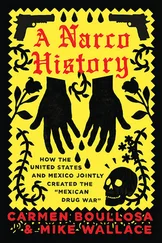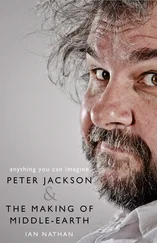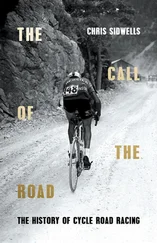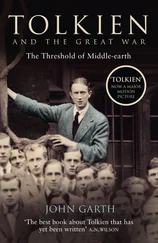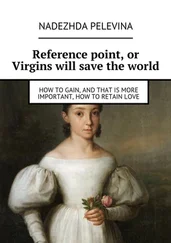There is in the final chapters a continuum of greed. Least reprehensible is the Elvenking’s: he likes artefacts, but for their beauty, and is satisfied in the end with the emeralds of Girion. Bard is more modern in tone, but is let off as well since his motives are so clearly constructive. Bilbo too, with his ethic of being ‘well-to-do’ rather than vulgarly ‘rich’, is relatively immune. The dwarves, though, have very strong feelings about treasure, especially their ‘pale enchanted gold’ or gold galdre bewunden; 20 they even put ‘a great many spells’ over the trolls’ hoard, just in case. As soon as they come within range of Smaug’s treasure its spell starts to work on them. They send Bilbo down the tunnel; they rejoice prematurely; on first sight of the treasure they have to be dragged away from it by Bilbo, ‘not without many a backward glance of longing’. Finally Thorin himself is obsessively determined to give nothing to Bard or elves or Lakemen, and when forced to disgorge by Bilbo’s theft of the Arkenstone, thinks against normal dwarvish behaviour-patterns of breaking his word. ‘So strong was the bewilderment of the treasure upon him, he was pondering whether by the help of Dain he might not recapture the Arkenstone and withhold the share of the reward.’
‘Bewilderment’ is a good word there. In modern parlance it means ‘mental confusion’, which is fair enough as a description of Thorin’s state; he has no idea how he will reach his ends, or what these ends are, only that parting with treasure is not among them. The modern sense however arises from the physical one of being ‘lost in the wild’, and Thorin is that too, being stuck in the centre of the Desolation of Smaug with plenty of gold but little to eat; he could end up as literally ‘bewildered’ as the Master of Laketown who, fleeing with his city’s share of the treasure, ‘died of starvation in the waste’. There is even a third sense of the word to remind us of the visible, tactile source of the treasure’s power, the quality that makes the dwarves run their fingers through it: it means ‘a tangled or labyrinthine condition of objects’, says the OED , quoting (1884) ‘What a bewilderment of light and color met her eyes’. When one thinks of the dim images of gold and jewels and ‘silver red-stained in the ruddy light’ which is Bilbo’s first glimpse of the hoard, one sees that this sense for ‘the bewilderment of the treasure’ is appropriate too.
Thorin’s ‘bewilderment’ is physical and mental and moral as well. The ‘dragon-sickness’ which he and the Master of Laketown catch is also simultaneously magical and moral. At the bottom of it there lies an old superstition which says that dragons are actually misers who have in greed and despair walled themselves up alive, ‘lain down on their gold’ as sagas say. Naturally the gold on which they have brooded (see Hobbit , p. 243) exudes a miasma of avarice. Yet one has the sense of an external force meeting an internal weakness, especially strong in the artefact-worshipping dwarves, and in the Master whose mind was given ‘to trades and tolls, to cargoes and gold’, who despises old songs and speaks on occasion (p. 233) with a distinctive post-Industrial Revolution modernity. This is in fact a complex and successful presentation of the motives behind a real historical change; one might usefully compare the scene at the end of Kurt Vonnegut’s Player Piano (1952), where the revolutionaries against the Automated State turn obsessively, with their first success, to tinkering with machines. Both books are making the same sort of (not very liberal) point: things, metal things, are genuinely fun to play with, but it’s very hard to stop the fun from getting out of hand, though only in the twentieth century have we become really aware of that. Hence the ‘continuum of greed’ from Elvenking to Master. Hence, too, the brooding from 1923 on the word galdor. Besides ‘spell’ and ‘bewilderment’ it also means ‘poetry’; you could say that the ‘enchantment’ of the treasure is a kind of wicked equivalent of ‘glamour’.
There is however another character in this continuum, indeed at one end of it, and that is Smaug. His name is another ‘asterisk word’, being the past tense *smaug of a Germanic verb *smugan, ‘to squeeze through a hole’, as Tolkien said in his 1938 Observer letter; also the Old Norse equivalent of an Old English magic word found in a spell wið sméogan wyrme , ‘against the penetrating worm’. But he has a mental sense as well as a physical one, since O.E. sméagan also means ‘to inquire into’ and in adjectival form ‘subtle, crafty’. 21 All round it is appropriate that Smaug should have the most sophisticated intelligence in The Hobbit.
Bilbo’s conversation with him is indeed a brilliant stroke. Like so much in the book it has a model in an Eddic poem, Fáfnismál , in which Sigurthr and Fáfnir talk while the dragon dies of the wound the hero has given him. Like Bilbo, Sigurthr refuses to tell the dragon his name but replies riddlingly (for fear of being cursed); like Smaug, Fáfnir sows dissension between partners by remarking on the greed that gold excites; the dissension actually breaks out when eating the dragon’s heart helps Sigurthr to understand bird-talk (another prominent Hobbit motif). Nevertheless Fáfnismál once again did not offer Tolkien enough. It drifted off into mere exchange of information, it contained as Tolkien said of Beowulf too much ‘draconitas’ and not enough ‘draco’ , not enough of the ‘real worm, with a bestial life and thought of his own’ (‘Monsters’, pp. 258–9). Tolkien therefore set himself to repair this gap, and did so once more by introducing a strong dose of anachronistic modernity.
Thus the most remarkable thing about Smaug is his oddly circumlocutory mode of speech. He speaks in fact with the characteristic aggressive politeness of the British upper class, in which irritation and authority are in direct proportion to apparent deference or uncertainty. ‘You have nice manners for a thief and a liar’ are his opening words to Bilbo (their degree of irony unclear). ‘You seem familiar with my name, but I don’t seem to remember smelling you before. Who are you and where do you come from, may I ask?’ He might be a testy colonel approached by a stranger in a railway carriage; why has Bilbo not been introduced? At the same time the ‘bestial life’ of the worm keeps intruding, as he remarks on Bilbo’s smell and boasts parenthetically ‘I know the smell (and taste) of dwarf – none better’, or when he rolls over, ‘absurdly pleased’ like a clumsy spaniel, to show the hobbit his armoured belly. One result is a frequent and vivid sense of paradox, which the ancient world, innocent of scientific rationalism, could hardly have developed: Smaug has both wings and weight, as we are reminded when he leaves his lair and ‘float[s] heavy and slow in the dark like a monstrous crow’ (my italics); and in the cold reptilian belly he keeps hot fire, which peeps out from under his eyelids when he pretends to sleep and flashes ‘like scarlet lightning’ when he is amused. The paradoxes, the oscillations between animal and intelligent behaviour, the contrast between creaky politeness of speech and plain gloating over murder, all help to give Smaug his dominant characteristic of ‘wiliness’, and what the narrator calls with utter modernity (the noun dates in this sense from 1847) his ‘overwhelming personality’.
All this gives great plausibility to another unexpected datum which the narrator springs on us, i.e. ‘the effect that dragon-talk has on the inexperienced’, the ‘dragon-spell’ which keeps prompting Bilbo to run out and confess. No ancient text contains any such motif, but as Smaug oozes confidentially on – ‘I will give you one piece of advice … I suppose you got a fair price. Come now, did you? … Well, that’s just like them … I don’t know if it has occurred to you … Bless me! Had you never thought of the catch?’ – he assumes the ‘Old experienced’ end of the polarity so strongly that it is no surprise for Bilbo to find himself pressed towards the ‘young innocent’ one. Yet the combined magico-moral effect (is it ‘spell’ or is it ‘personality’?) reminds one also of the ‘dragon-sickness’ that Smaug and his treasure between them seem practically and magically to generate. The character of Smaug is part of a Zusammenhang : nothing could be more archaic or fantastic than a dragon brooding on its gold, and yet the strong sense of familiarity in this one’s speech puts it back into the ‘continuum of greed’, makes it just dimly possible that dragon-motivations could on their different scale have some affinity with human ones – even real historical human ones.
Читать дальше

